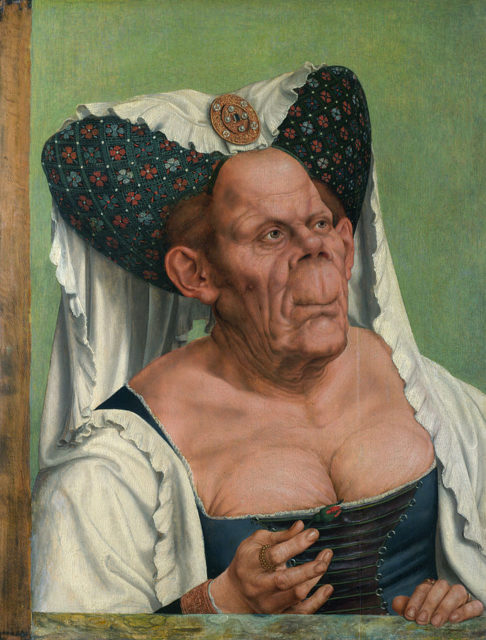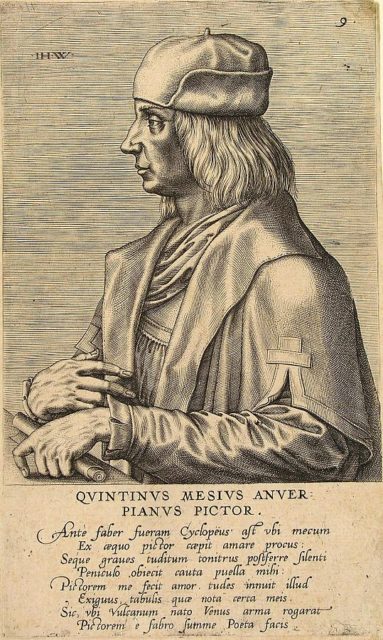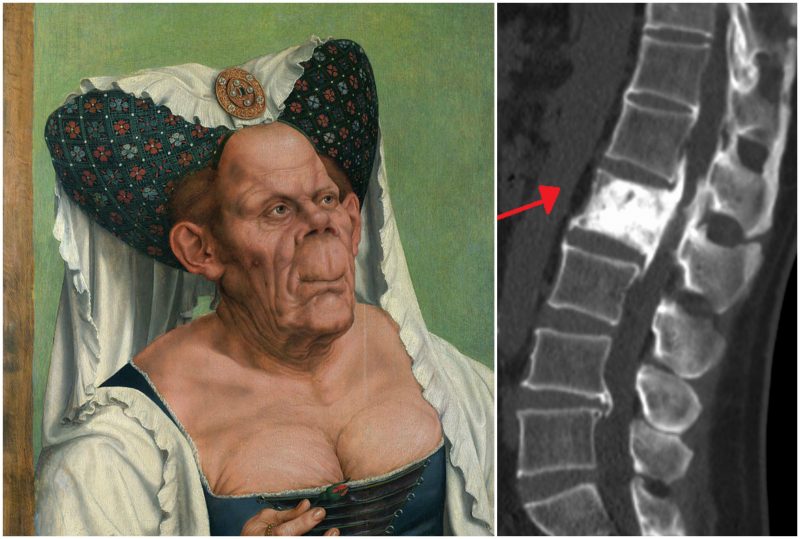Michael Baum, a medical professor of surgery at the University College of London, has an explanation for the unfortunate facial features of “An Old Woman,” or more famously called “The Ugly Duchess,” Quentin Matsys’ masterpiece. The professor, along with his student Christopher Cook, researched the famous painting and came to the obvious conclusion that the sitter had a rare bone disease, Paget’s disease.
The Flemish painting is half of a diptych, along with “Portrait of an Old Man” and it was painted around 1513 when culture and art were flourishing during the Renaissance. Today, it is in the collection of the National Gallery in London. There are allegations that the sitter may have been a political figure or an important noblewoman, most likely believed to be Margaret, the Countess of Tyrol, even though she had died 150 years before the painting.

The odd facial features, beady eyes, bad skin, disfigured cheekbones, certainly stand out from the artistic standards at that time. Matsys successfully channeled the unconventional contrast of that same standard, not at all satirizing or shunning deviations in human nature, but shedding light on the subject.

Nevertheless, there are allegations that the Flemish painter was influenced by Erasmus’ essay “In Praise of Folly” which was published in 1511.
In his essay, Erasmus satirizes women who “still play the coquette,” “cannot tear themselves away from their mirrors” and “do not hesitate to exhibit their repulsive withered breasts,” criticizing automatized beauty standards which were deemed unnatural or frowned upon.

There are also beliefs that the painting was an indirect copy of a 1490 painting by Leonardo Da Vinci himself, but they are widely dismissed. It is assumed that it could be the other way around, with Leonardo’s followers acquiring the Flemish painter’s technique themselves.

It turns out that the two artists exchanged works of art and styles of drawing, explaining the similarity of their caricatural technique which could be easily mixed up.
The painting shocked and, at the same time, entranced audiences at the National Gallery in London, and the diptych was reunited in 2008 when the two paintings were exhibited side by side.

“I’ve always been intrigued by this painting. It’s fascinating because it is so meticulously and lovingly painted. You think, why would someone go to so much trouble to paint such a grotesque image?
I always suspected there was something more to it than just a study in grotesquery.” states Baum, emphasizing that Matsys did not intend to shock or surprise by deviating from the artistic norm.
